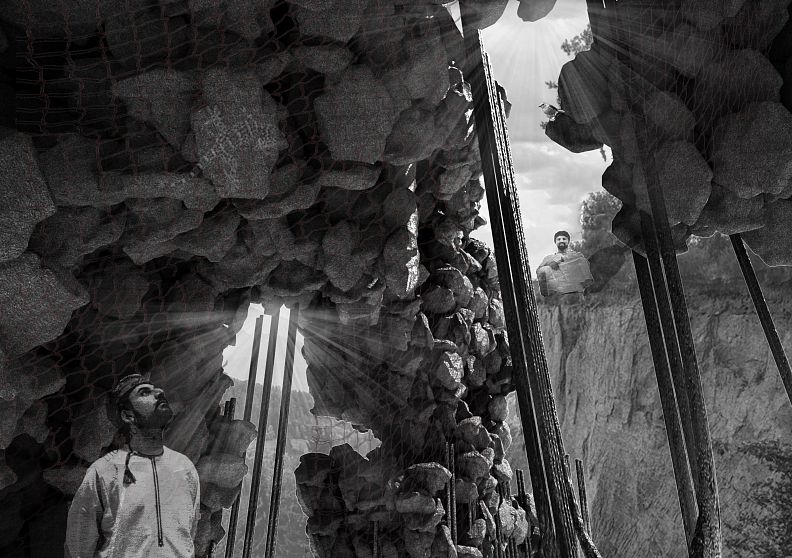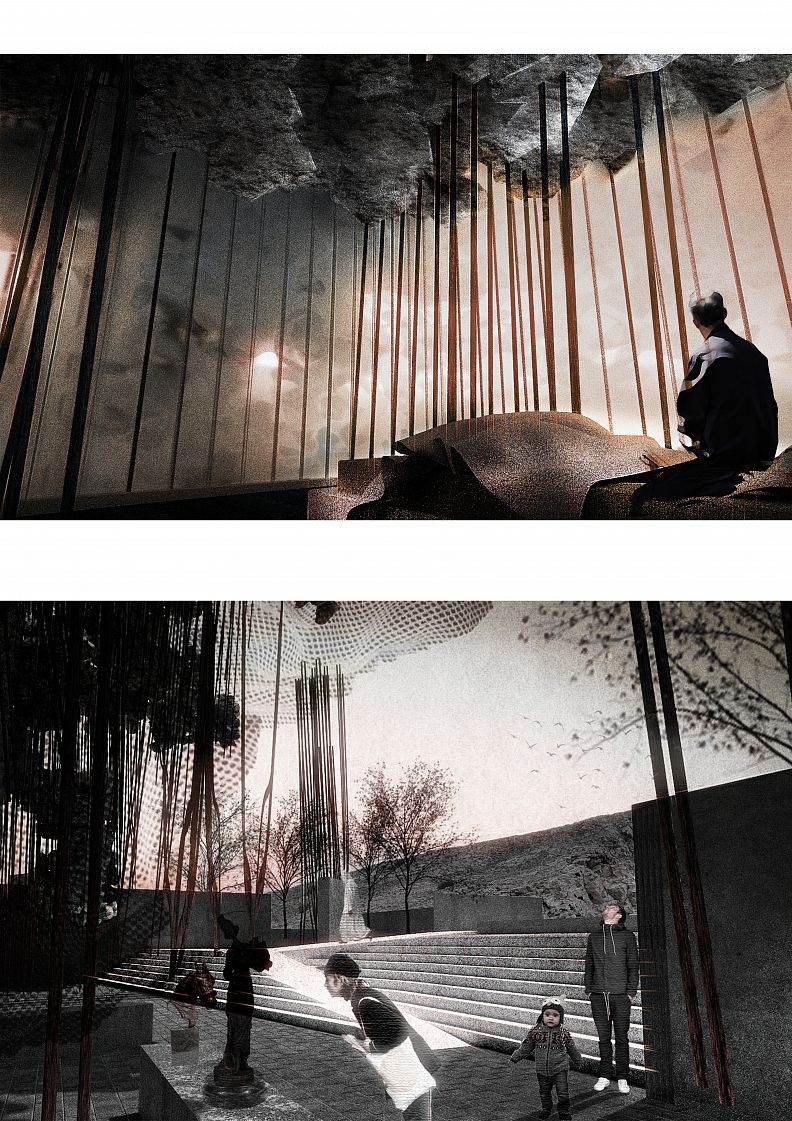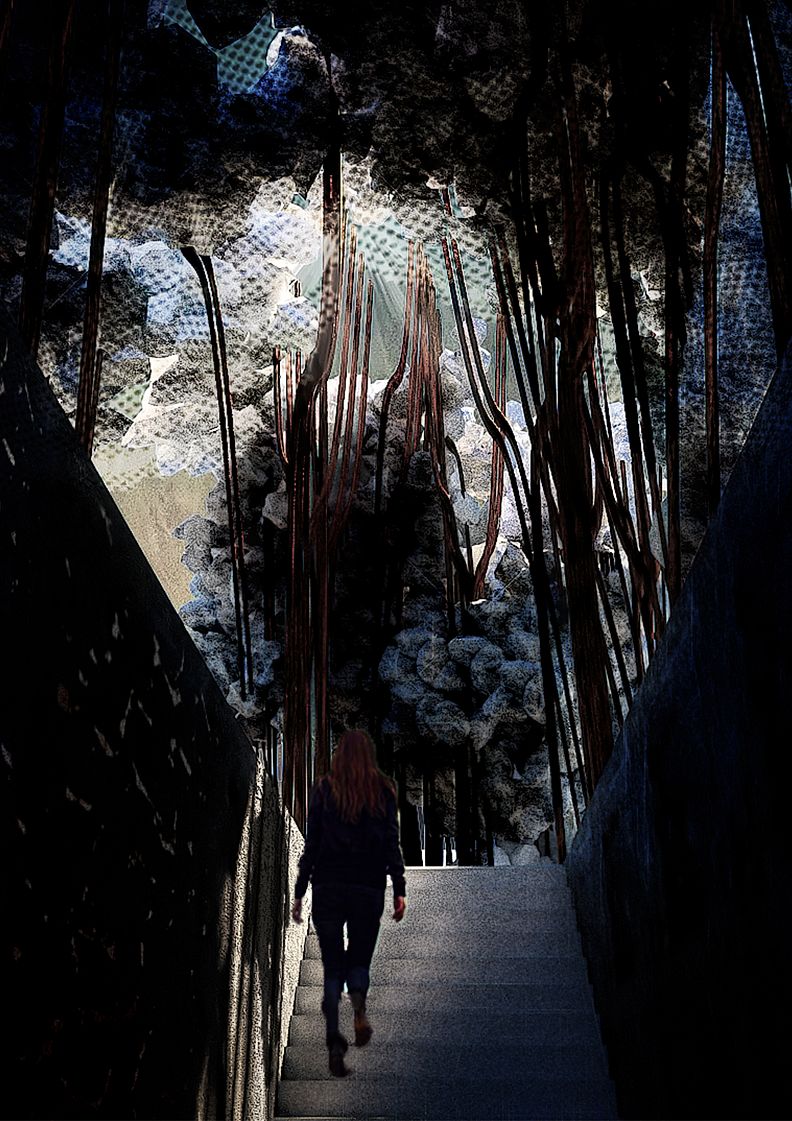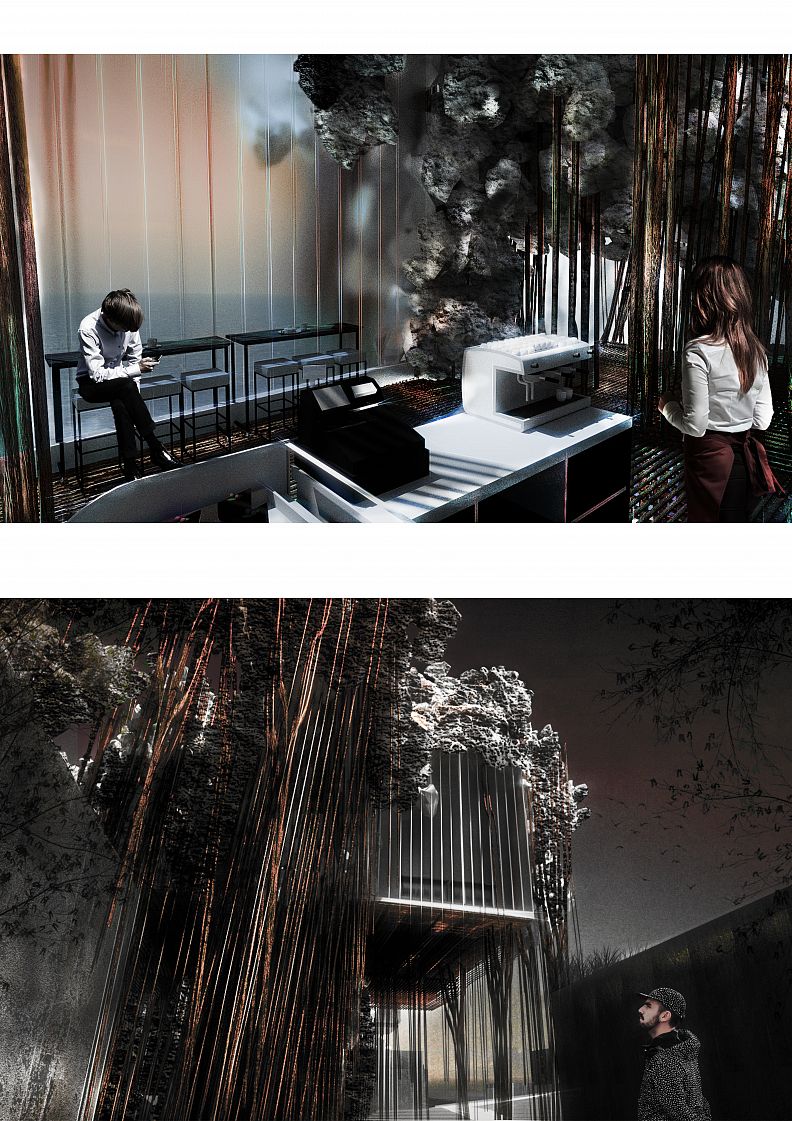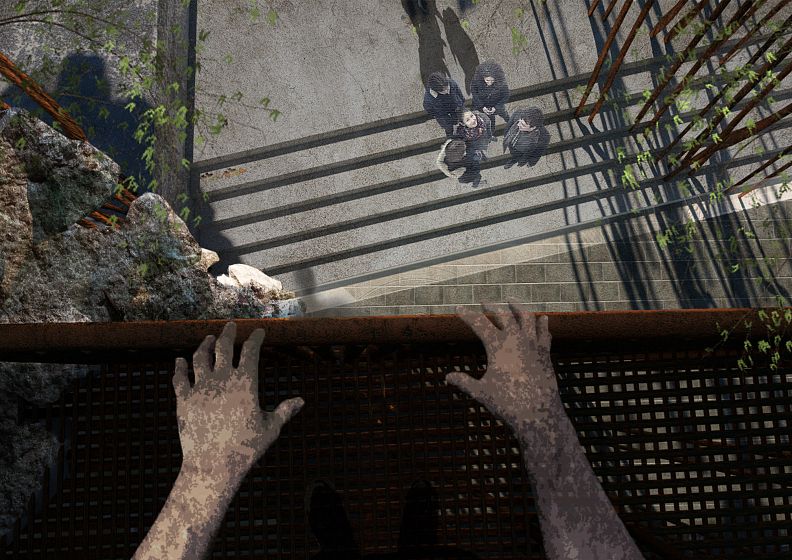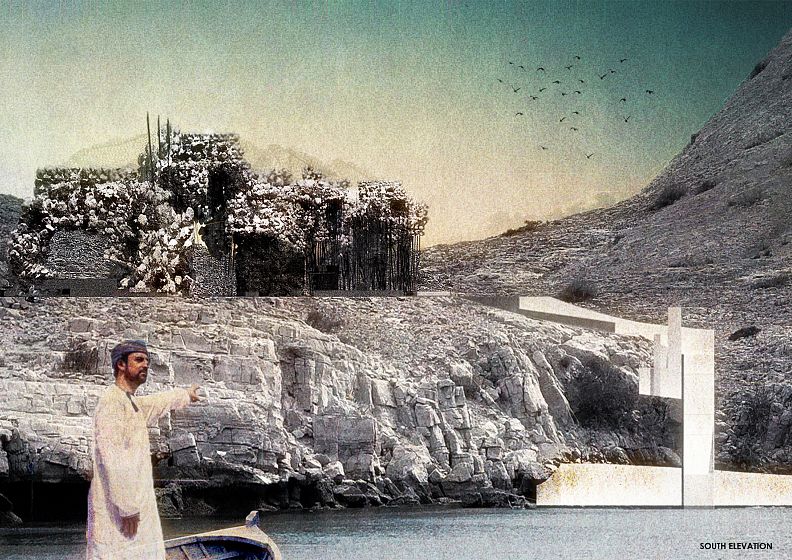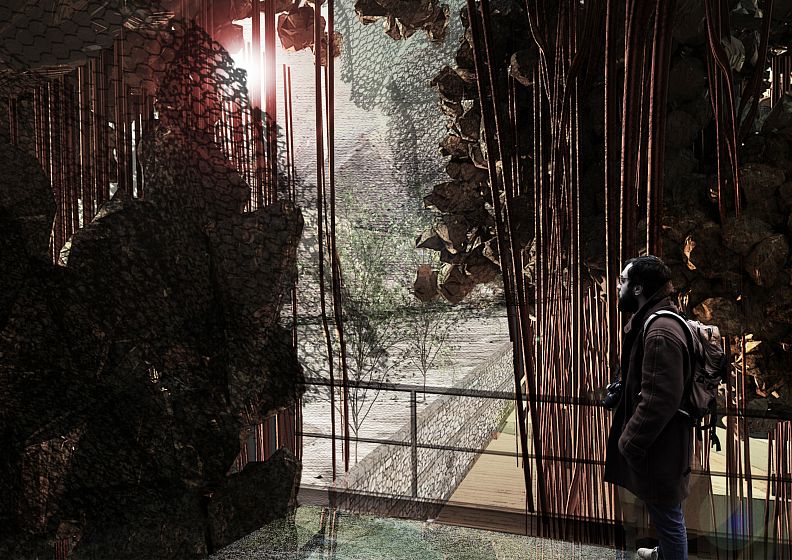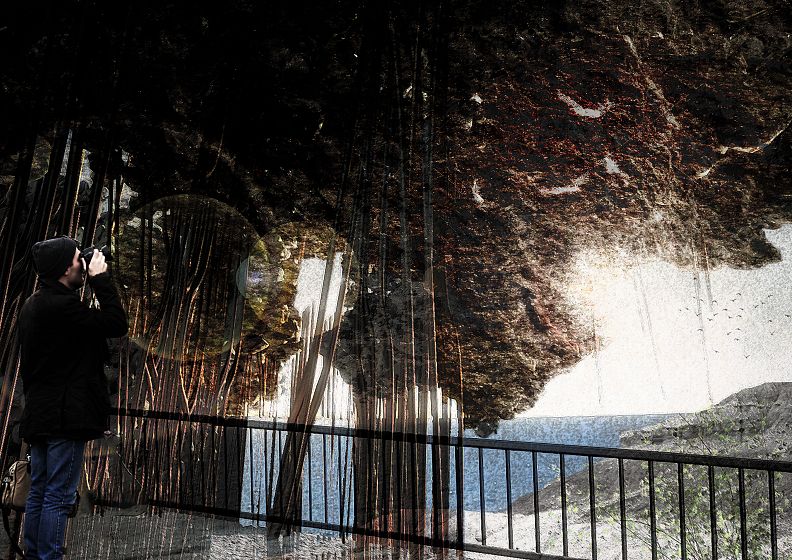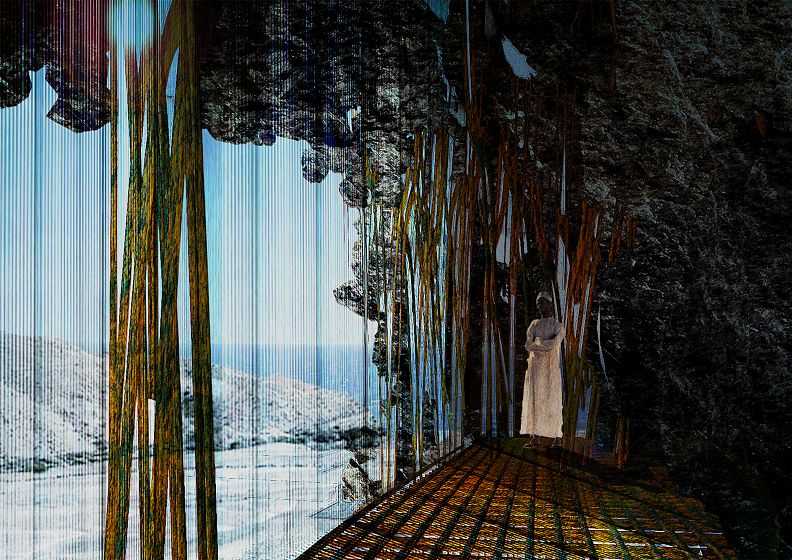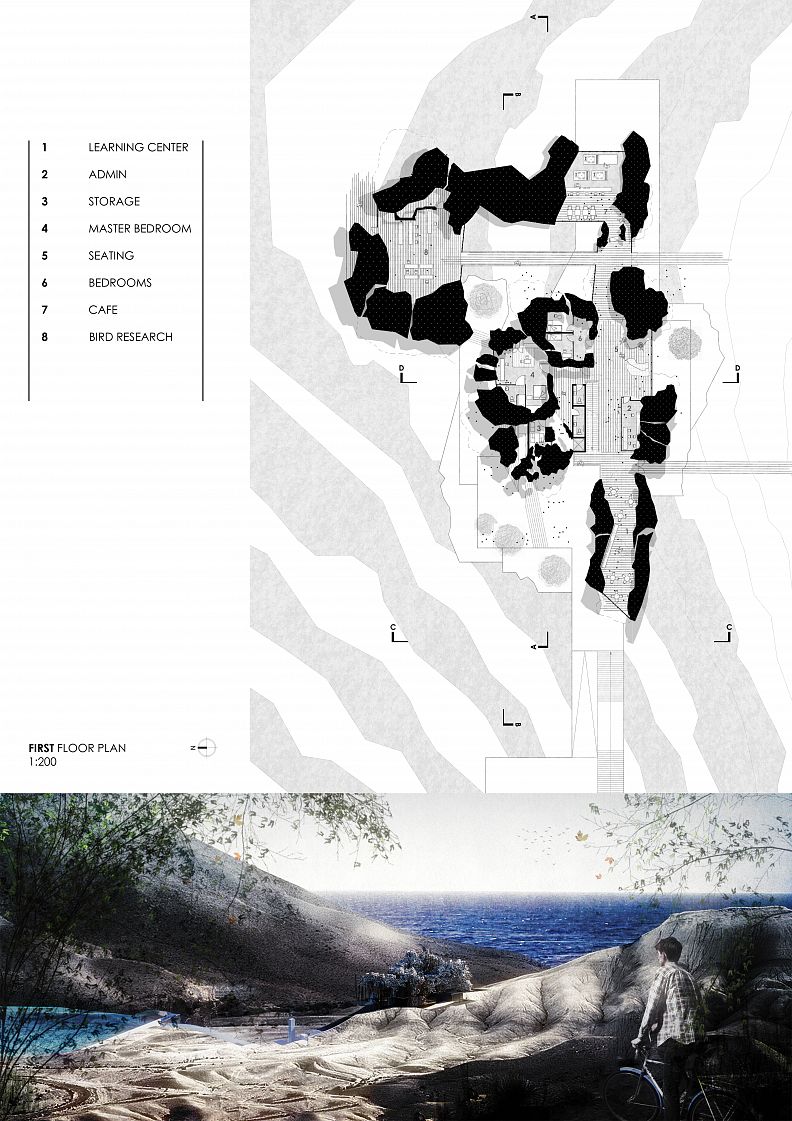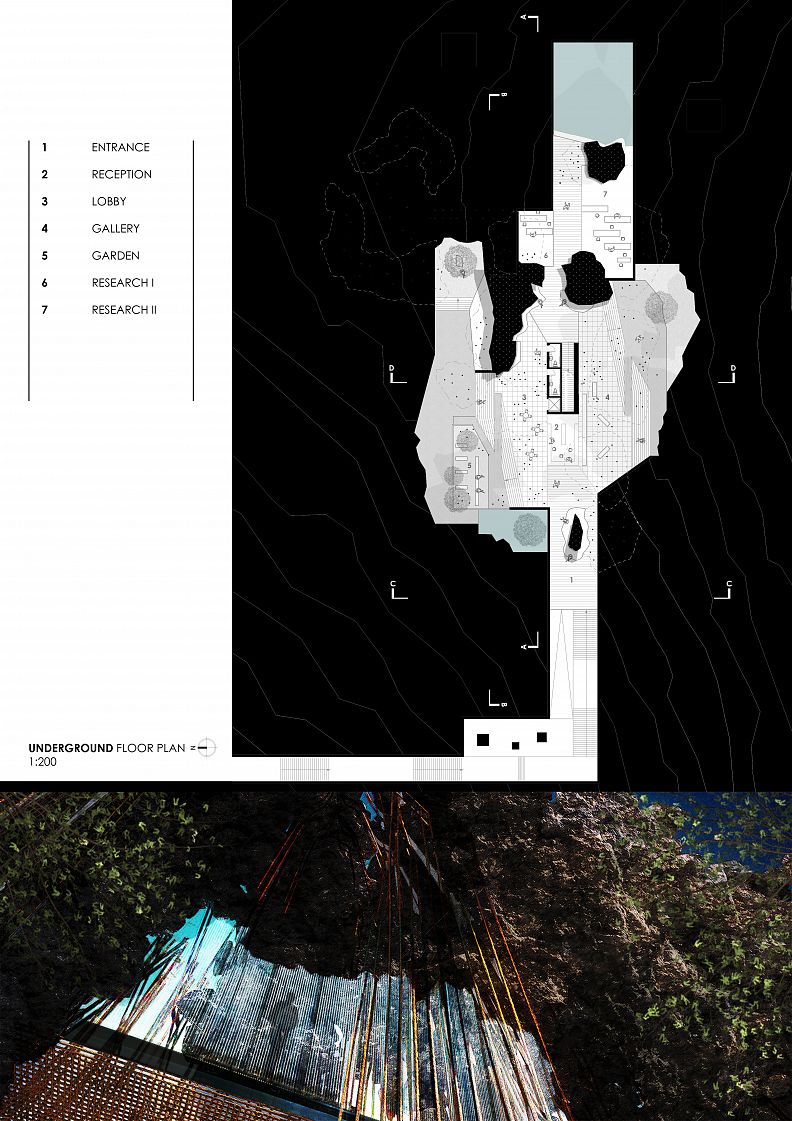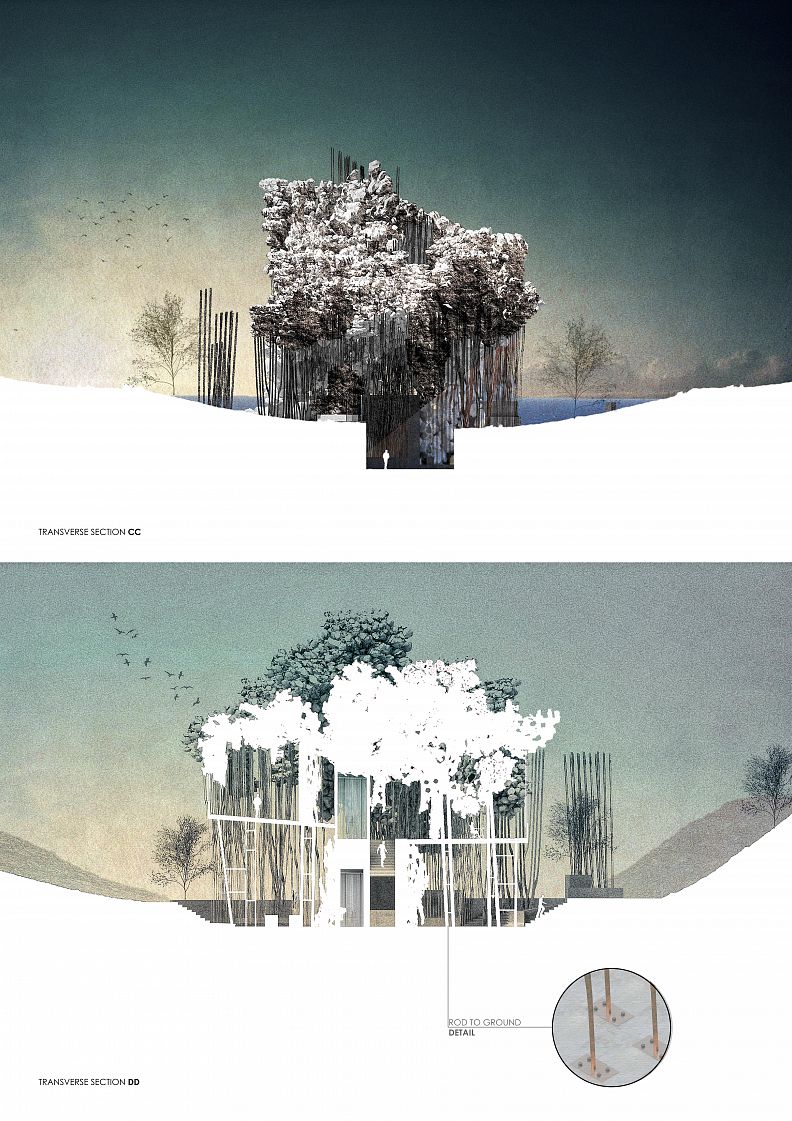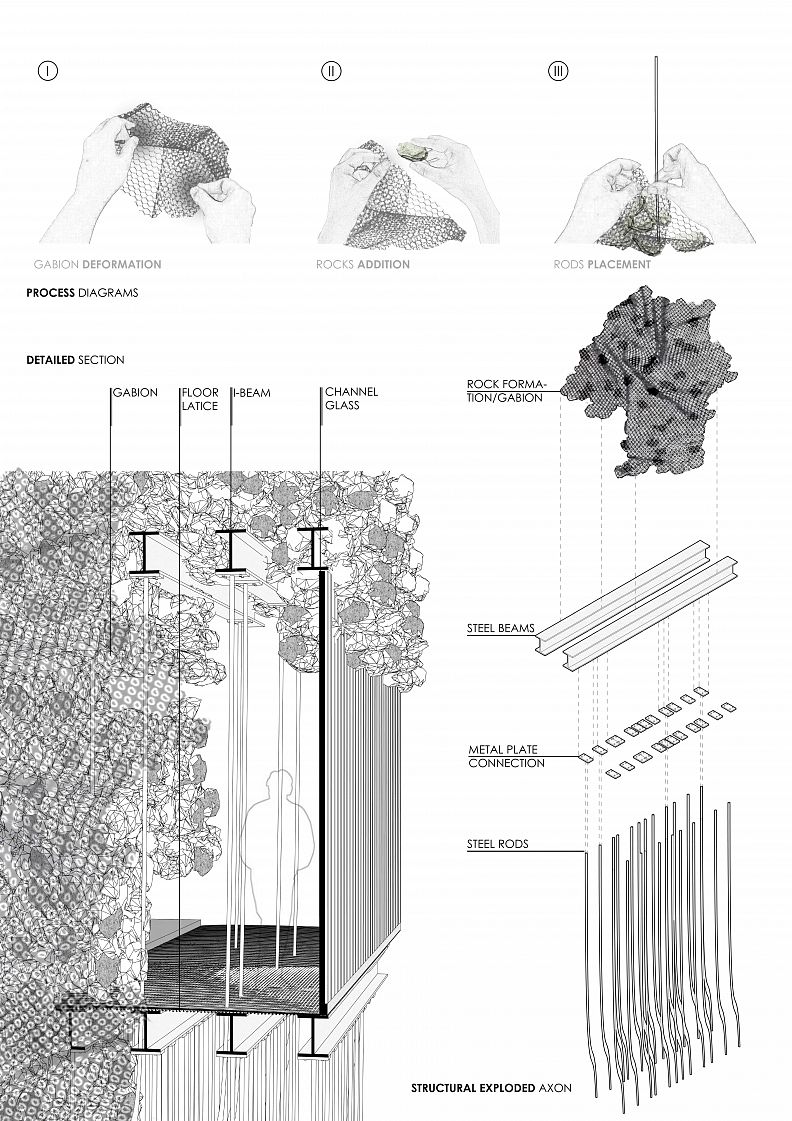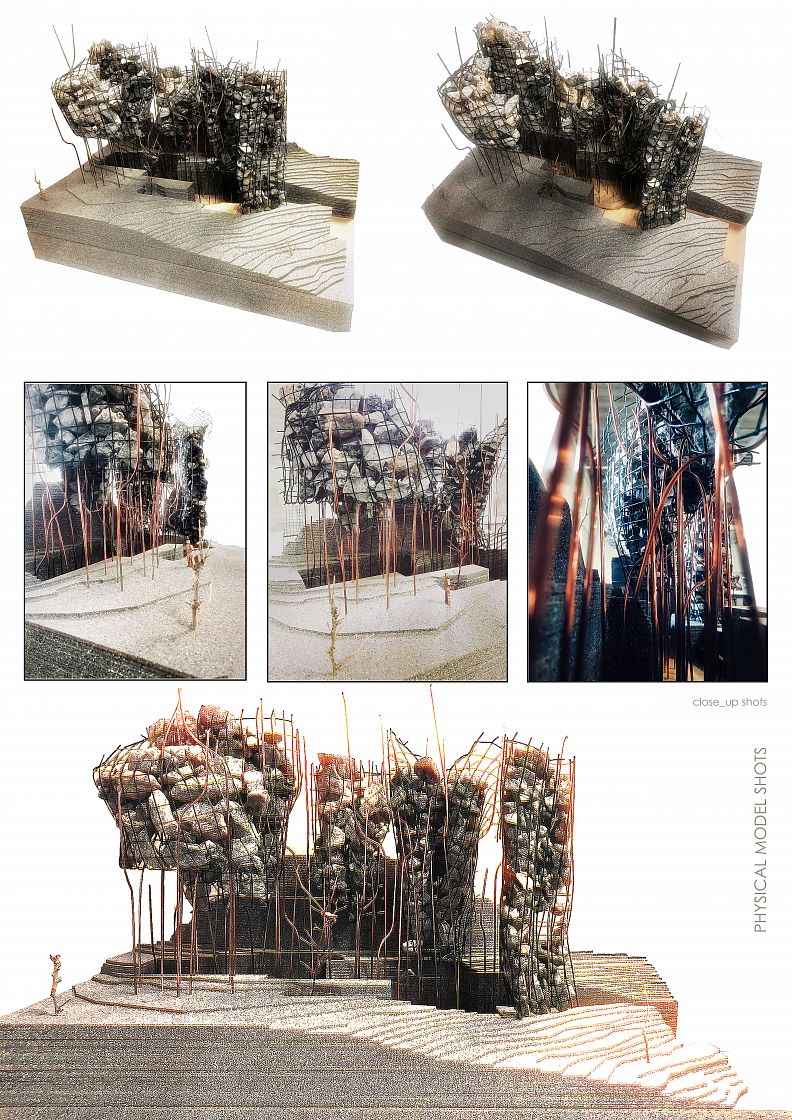Architecture Of Remoteness: An Animal Research Center in Oman

Project idea
Essentially, this project proposes an Animal Research Center that takes into consideration the local conditions of Limah, Oman. The use of material and form attempts to harmonize the connection between nature and man. A deformed gabion structure is used in the project in order to bridge the gap between nature’s eco-systems and science. It allows small animals such as birds, lizards, and snakes to be studied in their natural habitat. They are no longer locked away in cells but are rather allowed to freely roam in this series of deformed gabions. As time passes, these gabions will give rise to the formation of micro-climates, thus completely transforming the gabion structure and connecting it back to nature. Ultimately, this project belongs to the local eco-system and wildlife of Oman just as much as it does to the researchers that inhabit it. It tears down the boundaries between researchers and the wildlife, and also provides a mean to conduct research without interfering with nature.
Project description
Situated in Oman, this project aims to propose an animal research center that takes into consideration the surrounding context of the site. Formally and spatially, an exploration of the “Mass on top” concept has guided the project into unfamiliar grounds. Due to the sensitivity of the site and its inhabitants, a contextual material was therefore needed to be used. After careful analysis of local building materials and habits, the concept of using a Gabion became an essential pat of the project. Having the “mass” be a series of deformed gabions that can then allow for programs to be introduced in between them paved the ground for further exploration. Sitting on metallic rods, the rock gabions informed the form of the architecture. With animal research centers located both under and in between the gabions, the project gives researchers the chance to study small animals in their microclimates and habitats that form around the rock formations. Carving of the ground was also introduced under the project in order to allow for a public space for visitors, and to connect the project to the procession route. Essentially, the contrast between the stereotomic nature of the rocks and the tectonic nature of the rods sets forth the aesthetic of the exterior. Internally, the interplay between light and shadow sets off an atmospheric interior.
Technical information
The project faces the shore of Oman, with access from the sea! Researchers and visitors can access the project by boat. The research center houses several different functions. The ground floor contains an outdoor gallery, garden, and a lobby. Visitors are greeted with an open space under the research center before going up into the research spaces. The center of the project houses a core that contains the service spaces. The upper floor is where research is conducted. Fully engulfed by the gabion structure, the upper floor provides a cave-like atmosphere in which animal behavior can be studied. The deformed gabion form is dynamic in the way it defines the circulation routes and functional spaces. It opens up to provide skylight at some areas and closes up in others. Structural metallic rods crowd the spaces throughout the project, bouncing a bronze colorful light in the interior. Here, man and nature co-exist. Structurally, the deformed gabion structure is extended to the ground at several key points in order to distribute structural load, and to accommodate MEP functions.
